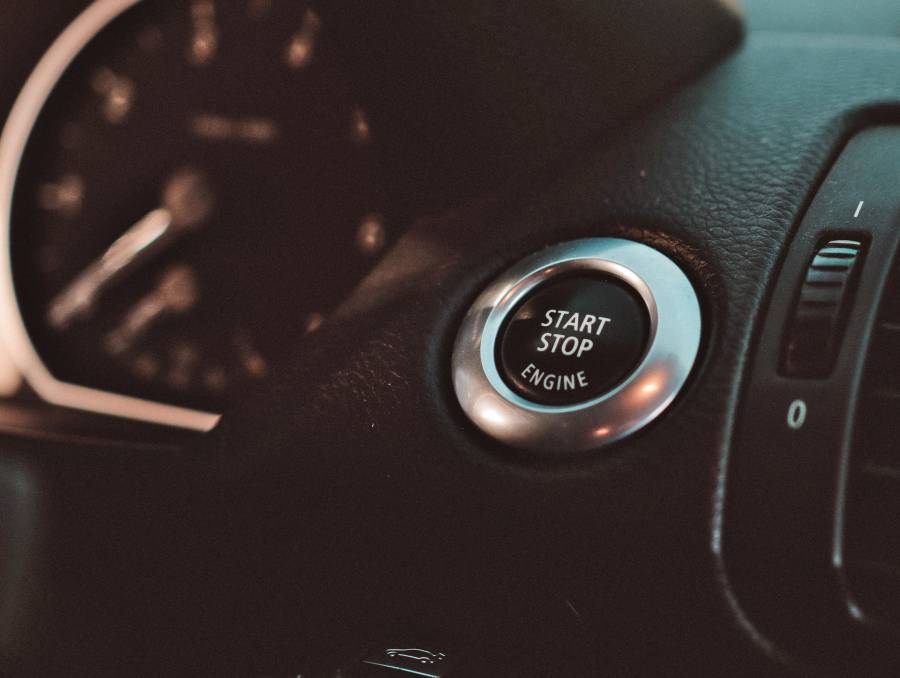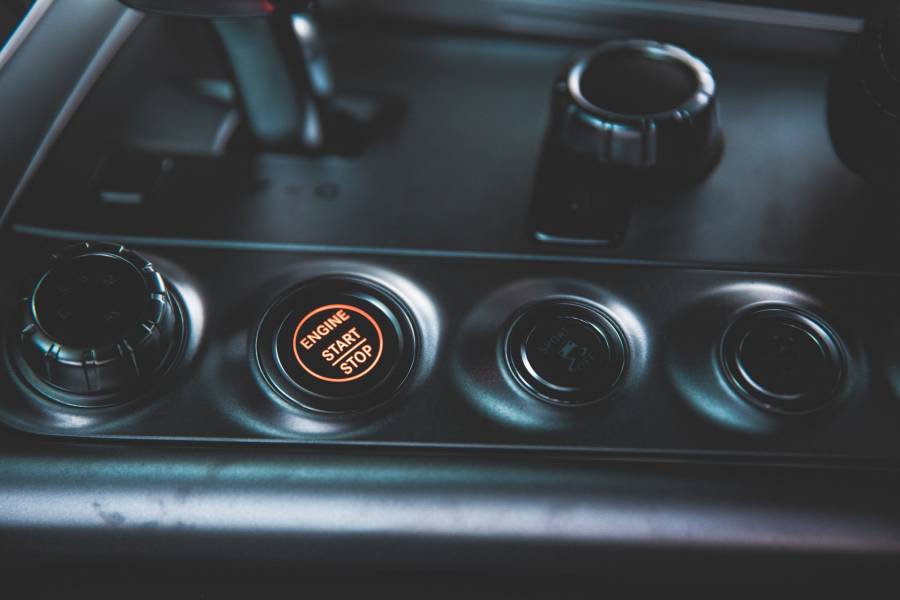Quick Navigation
The need for economical and environmentally friendly driving has introduced start-stop technology in modern cars.
The technology aims to cut the car’s fuel consumption and exhaust emissions and, at the same time, reduce the engine’s idling time.

The Auto start-stop shuts down the engine when the vehicle is stationary, and the foot continues to press down the brake pedal.
Similarly, the car engine will crank back up when you start lifting your foot off the brakes.
However, specific driver inputs and operating conditions may prevent the start-stop system from switching off the engine when you hit the brakes.
Reasons Why Auto Start-Stop Is Not Working
Several causes lead to your car’s auto start-stop not working. The most common reason is battery charge and health.
A dying battery will prompt the intelligent Battery Management System (BMS) to switch off the start-stop feature whenever it is in use.
The second most common issue is the extreme outside temperature (too high or too low).
Thirdly, the engine temperature can also create a similar bypass.
Finally, the fourth most common issue is a faulty engine management system.
Lastly, the problem does occur with unavoidable interruptions such as:
- Unfastened safety seat belts
- Open car doors or hood
- Active parking assistant
- Reverse gear is engaged
- The car wheel turned at an acute angle
- Steep hill with too large gradient
- Sensors not working (Battery or air mass)
- The braking system with low vacuum pressure
Here are some typical causes of auto start-stop not working.
State Of Charge And Health Of The Car Battery
The critical function of the car battery is to ensure that the engine starts and supports all available electrical systems.
Therefore, when the charge is low (below 80 -75%), the Battery Management System (BMS) will automatically disable the start-stop feature.
Similarly, if the car computer detects that the battery is dying, it won’t risk struggling to restart the car; hence it opts to deactivate the start-stop function.
Symptoms Of A Low Car Battery Current Or Voltage
- It produces dim headlights
- It produces a clicking sound when turning the key in the ignition
- The engine does not start quickly
Solution
If you experience the above symptoms, you need to take your car to a reputable auto shop for a battery test.
In most circumstances, getting a replacement battery will bring the Auto Start-Stop function back to life.
First, however, you must ensure that your battery is fully charged and has enough power to run the feature in modern hybrid cars.
Wrong Car Battery
A similar protective mechanism can occur when you install the wrong battery technology.
The wrong battery means a small number of charging cycles; hence the auto Start-Stop function will remain off.
The auto start-stop system uses a particular battery (deep cycle) type that can withstand the constant stopping and starting of the engine.
However, for the BMS to fully utilize the potential of a new battery, it must correctly register.
Symptoms Of A Wrong Car Battery
- Check engine light is flashing on and off
- It produces dim lights
- The engine does not start quickly
- Clicking sound when turning the key in the ignition
Solution
The BMS should detect the new start-stop battery.
In this case, you’ll need to take your vehicle to an auto shop and get your system reprogrammed and battery data reset.
This time around, you’ll have to get the right size and technology required to power the electrical components in your car and support the feature.

Extreme Outside Temperature
In extreme outside temperatures, the battery operates beyond its normal range.
As the temperature outside becomes too hot or too cold, more power may be required to run the air conditioning system to cool the cabin environment.
The BMS will knock off the auto start-stop function until it detects moderate car cabin temperature (40 -85F).
The Battery Management System (BMS) may fail to activate the auto Start-Stop function, primarily when the manufacturer’s comfort settings draw large amounts of electric current from the battery.
Symptoms Of Extreme Outside Temperature
- A circled “A” with a line through it will appear on the dash
- Short battery life cycle
- Rust build-up or corrosion on the battery terminals
- It increases the engine RPM
- “Auto-stop unavailable” light on
Solution
First, you must check the car manufacturer’s comfort settings for extreme weather conditions to determine whether it can simultaneously support the start-stop function.
Then, give your car enough time to warm up during cold weather and cool down when the outside temperature is too hot.
Extreme Engine Coolant Temperature
During summer or winter, the engine can get too hot or cold, and contacting it to run within its normal temperature range will create a demand for more current.
When the engine becomes cold, it uses the battery or consumers to stay warm. The engine requires a higher starting current to generate its heat by combustion.
A hot engine sucks the juices out of the car battery to keep the fan on the radiator running, especially at traffic lights when the airstream is not sufficient.
The BMS may fail to activate the stop-start function until the engine runs at its optimum temperature. Therefore, it shuts off as a safety feature.
Symptoms Of Extreme Engine Coolant Temperature
- It increases the engine RPM
- “Auto-stop unavailable” light on
Solution
You must check your car’s cooling system to determine whether the start-stop function is optional when the engine gets too hot or cold.
Then, let the engine cool down and wait for the dashboard to signal that the start-stop system is ready.
Faulty Engine Management System
The car computer is smart enough to disable stop-start if it detects any faults with the engine management system.
So when the engine is faulty, there are high chances that the auto start-stop not working warning will appear.
Symptoms Of A Faulty Engine Management System
- A warning light will appear on the dashboard
- “Auto-stop unavailable” light on
System Interruptions
Besides the battery and change in temperature, other factors may contribute to auto-start not working.
For example, failure to close the car doors or fasten your seat belt can fail to activate this function.
In addition, the BMS will override the auto start-stop function when the car is stationary, and the wheels are turned at a sharply acute angle.
An “Auto-stop unavailable” light will appear on the dashboard. It shuts off as a safety feature, especially when the battery is on load.
Solution
Ensure that all factors that interact with the BMS are in the proper order or in good working condition to avoid such interruptions.
For example, whenever you take your car to the garage, you should check that all sensors are clean and operational.
Conclusion
If the auto start-stop is still on the blink after applying all the solutions provided, it is best to visit an auto shop immediately.
Chances are, your car needs a battery replacement.
It is critical to preserve fuel economy and efficiency and reduce toxic emissions produced by gas-powered vehicles.
As long as your car meets the criteria of the auto start-stop, the feature will work with ease.

Kevin has been hanging around cars and automobile magazines since he knew what a car is. He grew up in his father’s 1995 Mercedes E320 Wagon and Volkwagon Phaeton W12 2004. He rides his first car, a manual 1979 Porche 911SC.
Currently, he owns an Acura Integra GS-R. During his childhood, he showed a keen interest in how things actually work and fix them. This passion transforms into his eternal love for cars and bestows him an ideal position in one of the leading automobile companies; whenever he finds time, he takes out his Acura and opts for the longest possible route to find hidden wholesome pleasure in a road trip.
Want to read some of the articles written by Kevin? Head to our blog section to find out all the articles written by Kevin.






